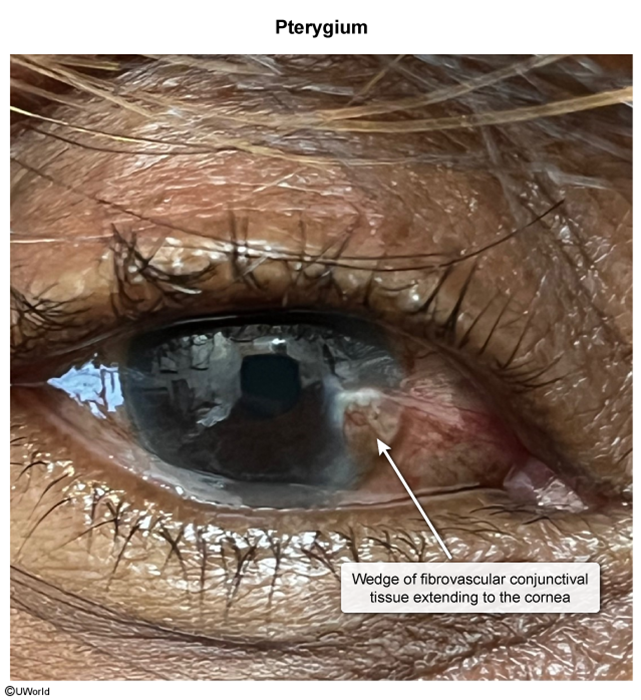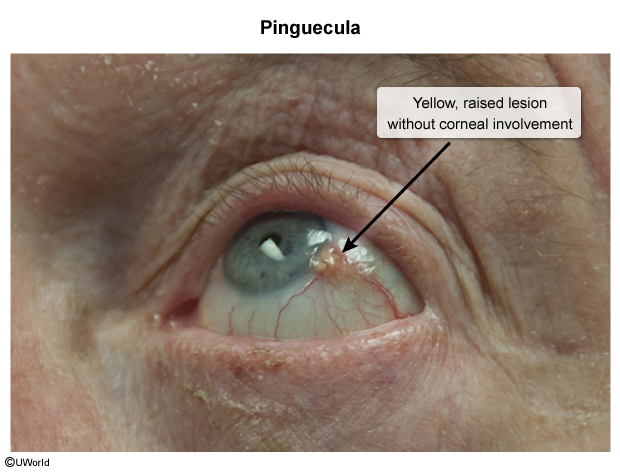Pterygium
Article Sections
Introduction
Pterygium (colloquially known as "surfer's eye") is an ocular surface disorder characterized by the growth of fibrovascular tissue onto the cornea from the conjunctiva. Pterygia are benign but can lead to discomfort, visual disturbances, and cosmetic concerns for affected individuals.
Pathophysiology and risk factors
Pterygium results from chronic irritation and inflammation of the conjunctiva in response to chronic exposure to environmental factors such as ultraviolet (UV) radiation, dust, and wind—particularly in individuals living in sunny climates or working outdoors. Pterygium is characterized by the proliferation of fibrovascular tissue, inflammation, and elastotic degeneration. The fibrovascular tissue extends onto the cornea, leading to changes in corneal curvature and potentially affecting visual acuity.
Clinical presentation
Patients with pterygium typically display a wedge-shaped (pterygium means "insect wing") growth that most commonly develops medially on the nasal conjunctiva (
Continue Learning with UWorld
Get the full Pterygium article plus rich visuals, real-world cases, and in-depth insights from medical experts, all available through the UWorld Medical Library.
Images

